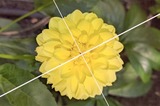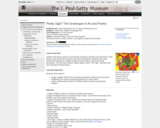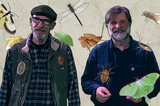
Symmetrical Cube Designs Mathematics Instructional Plan
- Subject:
- Mathematics
- Material Type:
- Lesson Plan
- Provider:
- VDOE
- Author:
- VDOE
- Date Added:
- 10/04/2024

Symmetrical Cube Designs Mathematics Instructional Plan

Symmetrical Shape Fun Mathematics Instructional Plan

Learn about many ways to combine art and science as we observe the world around us. We often think of scientists as methodical and precise, and artists as free-willed, impulsive creators. But did you know that some art has science packed right into it? And that artists throughout history have helped scientists conduct their work? Learn about the photography of Berenice Abbott who documented the changing New York skyline with photographs of architecture and urban design of the 1930s, and science interpretation in the 1940s to 1960s. Learn how to use the sun to air dry your salt dough creations and explore papier-mâché.

The PDF may be handed out to students as is.

Symmetry Mathematics Instructional Plan

Just in Time Quick Check Line of Symmetry

Just in Time Quick Check Symmetry

Just in Time Quick Check Distance, Midpoint, and Slope

Just in Time Quick Check Parallel and Perpendicular Lines

Students will discuss works of art that have grotesque elements and symmetry in their design. They will identify symmetry and line in grotesques. Students will create symmetrical designs for a pilgrim bottle and also design a door panel using grotesques. They will then analyze William Blake's poem "The Tiger" and write their own grotesque-inspired poetry.

2.12 Symmetrical Snow Fun Co-Teaching MIP

Entomologist Dr. Art Evans and VPM radio producer Steve Clark co-host What’s Bugging You? Their engaging, wide-ranging, and humorous explorations into the world of insects and entomology are presented as an animated series. It leans into the crazy, fun, and hilarious aspects of the insect world. It asks the question of when is a bug a true bug. How do I find those insects hiding in plain sight? What in the world is a booger beetle and a fecal shield? All these answers and more are uncovered in the new videos through artfully illustrated and accurate depictions of insects and their surroundings.
Each video captures the look of a field notebook, with handwritten observations and illustrations. Inspired by entomologists' collections, animator David Vinson shares, “I wanted the labels to have typewritten and handwritten text like you would see in a case of pinned insect specimens with notes and scientific names. As for the insects themselves, I wanted them to have the illustrative quality of a field guide. Even though it was all created digitally, I still wanted it to look like the elements could have been made by hand.”
Whether you love insects or you just don’t know you love them yet, we think you’ll enjoy this series. Not only is it fun, gross, weird, and strange, but it’s also educational and entertaining. You’ll learn more about the insects that are all around us as you stop and wonder “what’s bugging you?”